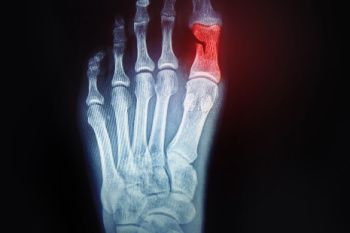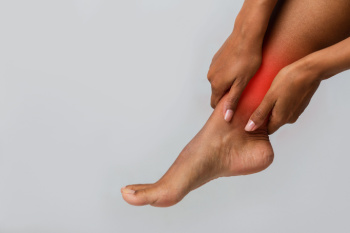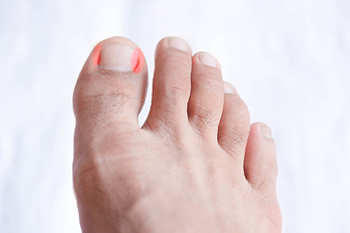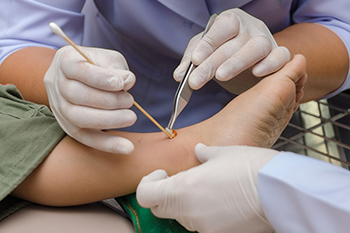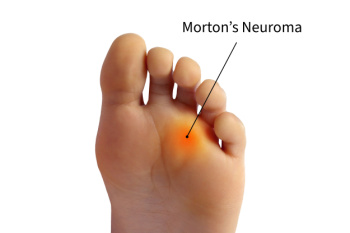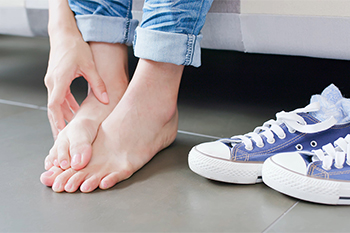
Athlete’s foot is a fungal infection that affects the skin on the feet, often caused by walking barefoot in warm, moist environments like locker rooms or pool areas. It spreads easily and thrives in sweaty shoes and socks. Symptoms include itching, redness, peeling, cracking skin, and sometimes blisters or a burning sensation between the toes or on the soles. The skin may look dry, flaky, or scaly and can become painful if left untreated. While mild treatments may help some cases, prescription antifungal medications, which can be topical creams or oral drugs, are often necessary for stubborn or severe infections. These medications effectively eliminate the fungus and help prevent recurrence. A podiatrist can diagnose athlete’s foot and recommend the best treatment plan, including proper foot hygiene and preventive measures. If you are dealing with this bothersome issue, it is suggested that you schedule an appointment with a podiatrist for appropriate treatment, which often includes prescribed medication.
Athlete’s Foot
Athlete’s foot is often an uncomfortable condition to experience. Thankfully, podiatrists specialize in treating athlete’s foot and offer the best treatment options. If you have any questions about athlete’s foot, consult with one of our doctors from New England Foot & Ankle . Our doctors will assess your condition and provide you with quality treatment.
What Is Athlete’s Foot?
Tinea pedis, more commonly known as athlete’s foot, is a non-serious and common fungal infection of the foot. Athlete’s foot is contagious and can be contracted by touching someone who has it or infected surfaces. The most common places contaminated by it are public showers, locker rooms, and swimming pools. Once contracted, it grows on feet that are left inside moist, dark, and warm shoes and socks.
Prevention
The most effective ways to prevent athlete’s foot include:
- Thoroughly washing and drying feet
- Avoid going barefoot in locker rooms and public showers
- Using shower shoes in public showers
- Wearing socks that allow the feet to breathe
- Changing socks and shoes frequently if you sweat a lot
Symptoms
Athlete’s foot initially occurs as a rash between the toes. However, if left undiagnosed, it can spread to the sides and bottom of the feet, toenails, and if touched by hand, the hands themselves. Symptoms include:
- Redness
- Burning
- Itching
- Scaly and peeling skin
Diagnosis and Treatment
Diagnosis is quick and easy. Skin samples will be taken and either viewed under a microscope or sent to a lab for testing. Sometimes, a podiatrist can diagnose it based on simply looking at it. Once confirmed, treatment options include oral and topical antifungal medications.
If you have any questions, please feel free to contact our offices located in Wakefield, MA, Nashua and Derry, NH . We offer the newest diagnostic and treatment technologies for all your foot care needs.
